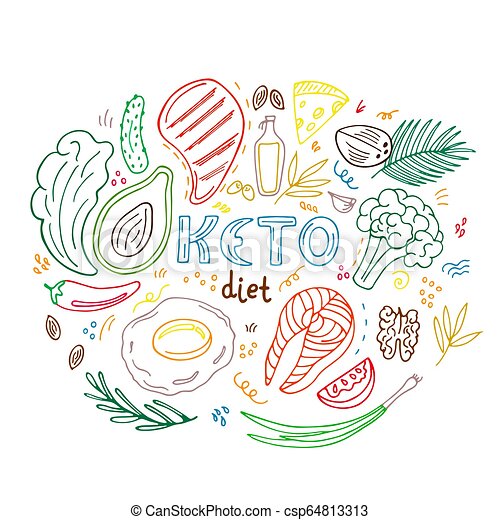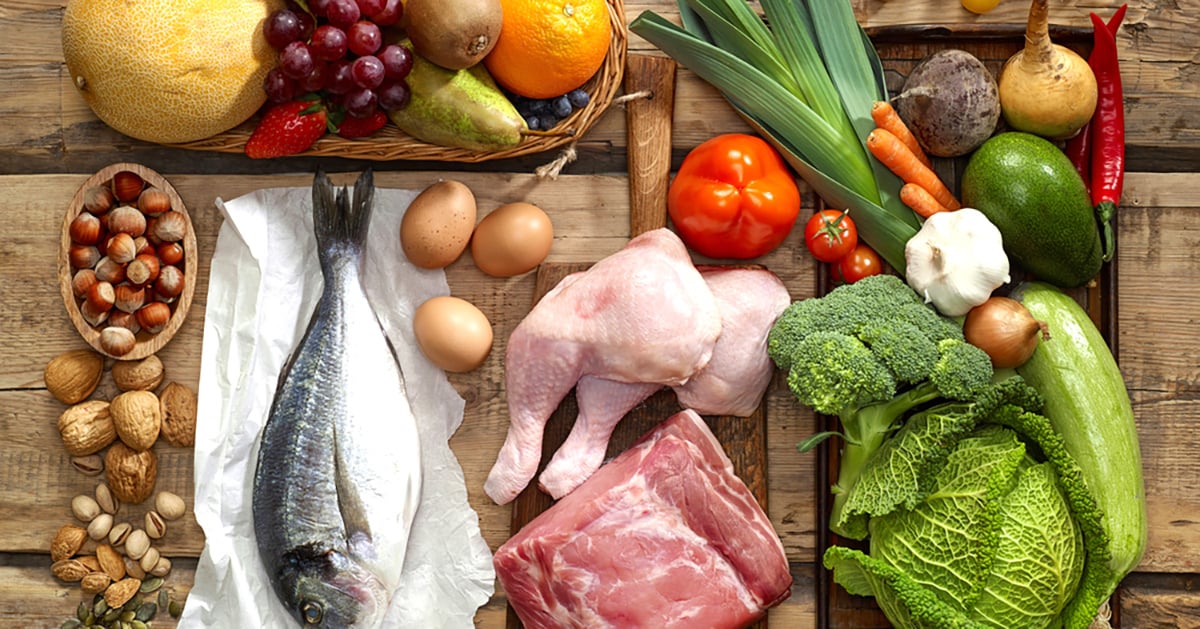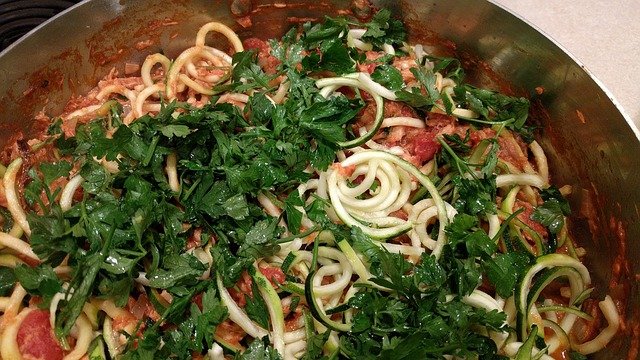
The menu diet paleo encourages us to eat the foods our ancestors enjoyed. This diet includes foods such apricots, dried Pumpkin seeds, and banana with almond Butter. It also includes sweet potatoes, chicken, and vegetables. EatingWell believes that certain foods are important, even though it may seem restrictive. Here's a discussion on which foods you can eat while still following a healthy eating plan.
Pola makanan paleolithic manusia
Christina Warinner, Ph.D., studied pola makan manusia purba and mitos-mitos pola makanan paleolithic manusia in 2010. She revealed that manusia Paleolithic manusia consumed large quantities of daging, and ate all types of meat. This myth was widely believed by paleolithic people, but is now considered outdated and irrelevant.
Diet paleo, also known as the diet of the manusia gua, is a way to eat similar to what manusia gua and man used to eat. They not only improve their kesehatan but also help to preserve their heritage. This diet isn't for everyone. It is not for everyone.
Two types of kelompokan make up the lukisan of Ramasokat: ceruk, and lukisan-gua. They were cultivated in Liabalano as well as Sulawesi Tenggara. The lukisan gua has a combination of proteins, fats and carbohydrates. These nutrients are essential for healthy living and can help us understand the subtleties of human evolution.

Modern humans have many advantages, but there are also some risks. People who eat foods rich with nutrients, such the Paleolithic Era diet, are more likely than others to develop diseases. Your risk of developing disease is reduced if you eat clean. Clean Eating is a diet that promotes healthy eating. These are the obvious benefits to eating clean: A diet low in fat can help your health. You won't get sick by overeating.
Paleolithic diet allows certain foods
Foods found in processed foods often contain added sugars, vegetable oil, and artificial sweeteners that can be harmful to your health. In excess of salt, refined sugars and other sweeteners can lead you to becoming obese. Salty foods can also contribute to heart disease. Vegetable oils are also controversial. The American Heart Association recommends corn oil and safflower as alternatives to canola oil. These oils contain high levels of omega-6 fatty acids.
Some commercial paleo diets limit dairy products to a minimum. Others have more strict restrictions. Paleolithic diets allow certain foods, such as lean pork loin and roasted chicken with onion, carrot stuffing and steam broccoli. Other paleo diet plans allow little honey or maple syrup. There are varying levels of scientific research about the benefits of this diet.
Paleo advocates recommend that you avoid legumes because they contain high amounts of phytic acids. These substances prevent the absorption and utilization of essential minerals. However, they are permitted in some cases. Although it can be tempting for some to eat legumes or potatoes, it is not advised to do this as often as with other processed foods. Rather, you should include plenty of fruits and vegetables in your daily meal plan.
Guidelines for eating a paleolithic diet
Although they are quite different from the usual modern diet, the Guidelines to Eating a Paleolithic Diet share many of the same principles. Although the Paleolithic diet was mostly made up of animal products, it also includes a lot of plants and has few restrictions. However, it is important to note that you may not be genetically suited for the diet, and that the higher meat consumption may not be healthy. If you think that you might benefit from a Paleolithic diet, you should proceed with caution.

Dairy products are the most popularly excluded food groups on the Paleolithic diet. Cutting out these key food groups may leave you at risk for nutritional deficiencies. Tooth decay can be caused by a deficiency of calcium. A diet low in this mineral may also cause problems with your bones and teeth. Calcium also plays a key role in blood Clotting and Muscle Contracting. Whole grains lower the risk of type 2 diabetes, stroke, heart disease, as well as stroke. However, because grains were largely eliminated, you may find yourself at risk for calcium deficiency.
There are many principles that guide Paleolithic food choices. It emphasizes eating nutritious foods, such as fruits and vegetables, and restricts carbohydrates and processed food. It is best to follow the guidelines closely so you don't overdo it. Remember that a paleolithic diet is different for every individual. It is important to understand that the Paleolithic diet is based on a lifestyle that was prevalent 10,000 to 12,000 years ago.
FAQ
How can I learn to cook like the pros?
Cooking can help you become a better person. Being able to cook healthy food is a great skill to improve self-confidence. Start cooking at home if you want to learn how to cook. It is important to discover what type of recipes you enjoy. You can then read books about other cuisines like Mexican, Chinese and Italian. Finally, make sure you practice different recipes until you feel confident.
How do you store leftovers best?
Tupperware containers are a good choice for leftovers. These containers keep foods fresh and prevent odors from forming. They also keep foods warm for longer. You can freeze leftover food in freezer bags. Place food in another freezer bag to prevent air escape when freezing. Once the food has been frozen, transfer it into an airtight container such as a zip lock bag.
How can I get hired to be a chef?
You must complete a degree in culinary arts to be able to apply for a job at the table as a professional chef. You can then join a professional group such as ACF. This organization provides certification exams and offers networking opportunities.
Are there any ingredients I can buy to cook?
You don't need to buy every ingredient. Many grocery stores carry pre-made sauces and items that can be used as substitutes. If you are looking to save money, premade meals may be a good option.
What are some basic cooking skills?
Basic cooking skills are the ability to read and follow recipes. If you want to be able to cook for yourself, then you need to learn these basic skills. Cooking can be a great way of saving money, as you don't need to go out to eat all the time.
Statistics
- You'll be amazed that over 90% of CIA students receive scholarships and grants to finish their culinary studies. (ischoolconnect.com)
- According to the BLS, chefs earn $58,740 a year. (learnhowtobecome.org)
- The median pay for a chef or head cook is $53,380 per year or $25.66/hour, according to the U.S. Bureau of Labor Statistics (BLS). (learnhowtobecome.org)
External Links
How To
How to make an omelet that is perfect
Omelets have always been a favourite food to eat for breakfast. But how do they turn out so perfectly? I have tried many different recipes and methods, but none of them work. Today, I'd like to share some tips with you in order to make delicious and fluffy omelets every day.
First, eggs can be very temperamental ingredients for making omelets. The eggs must be fresh from an organic source and kept at room temperature until they are ready to be cooked. If you don't keep them cold enough, the whites won't form properly, and the yolks will break down too much and become runny. This can make your omelets look bizarrely colored. If you plan to cook the eggs right away, it is best to use room temperature eggs.
Another tip is to separate each egg before adding them to the saucepan. You don't want the white to get mixed with the yolk, as this could cause the egg to curdle.
The egg can burn if it is placed directly on the stovetop. Instead, heat the egg in a microwave for 10 seconds and then place it in a pan. The microwave heat cooks the eggs just right without overcooking them.
Next, let’s talk about mixing the egg. When you mix eggs together, you want to beat them well. You need to turn the bowl of the mixer upside down. Next, shake the bowl vigorously. By doing this, the egg is thoroughly mixed with the air in the bowl.
Now comes the fun part: adding the milk to your mixture. First, pour half of the milk into the beaten eggs and then fold the eggs gently into the remaining milk. If you still see streaks of eggs, don't worry. These streaks will disappear once the omelet has been turned over.
After you have folded your eggs, heat up the oil on medium heat. Wait for it to get hot. When the oil is hot enough, add 1/4 cup butter to the pan. Stir it around until the butter covers the entire pan. Now carefully crack open the lid of the pan and sprinkle salt into the pan. A pinch of salt will help prevent the omelet from sticking to the pan.
Once the omelet has formed, cover the pan again and wait for the top side to set completely. Use a spatula to flip the omelet or turn the pan upside-down. Cook the other half for another minute. Take out the omelet and place it in a bowl.
This recipe works best using whole milk. Skimmed milk is also possible.